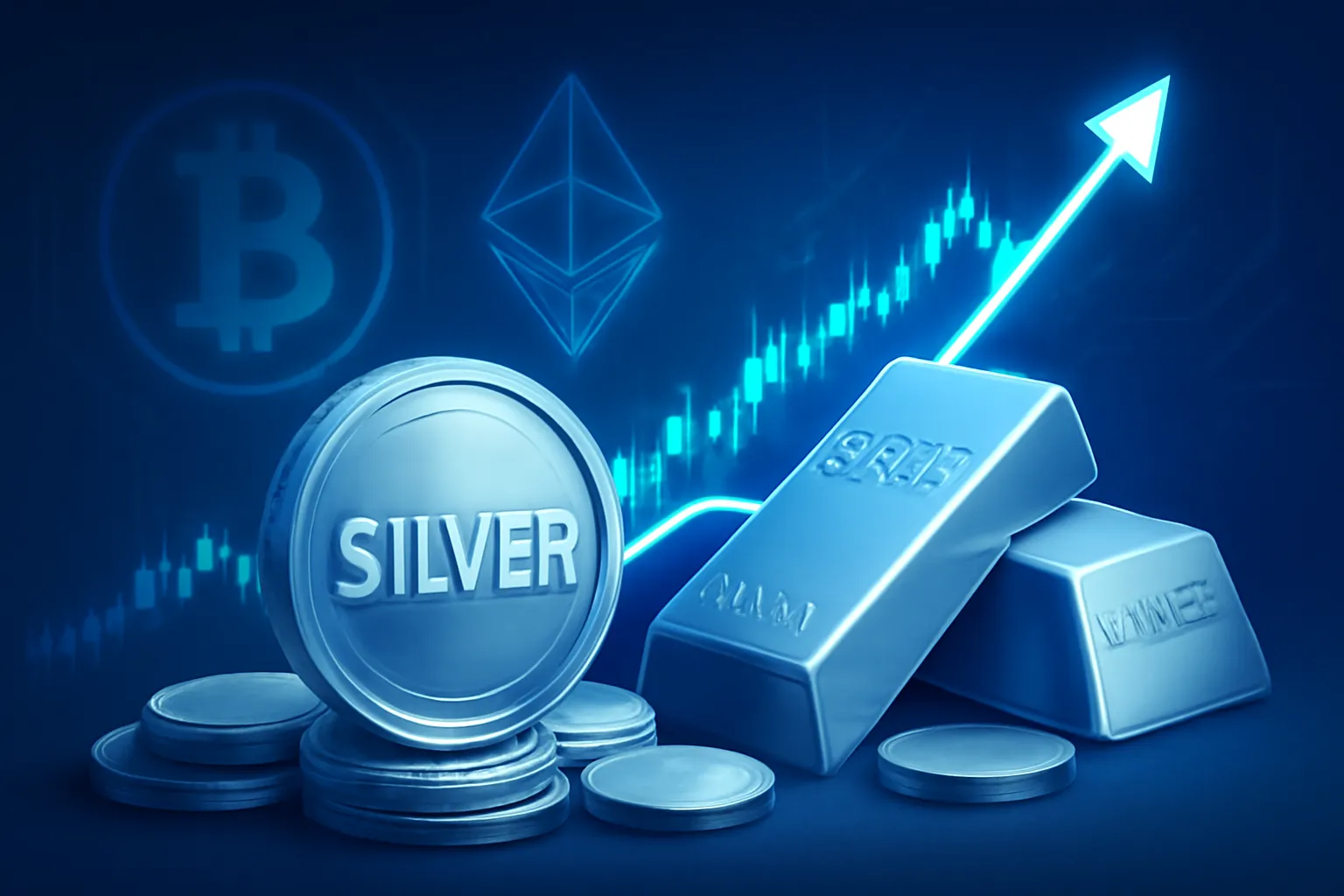Will Silver Hit $100 an Ounce? Price Predictions and Analysis
Will Silver Hit $100 an Ounce?
Whether silver is going to reach $100 per ounce has been a question that has received wide interest from investors, traders, and analysts alike. For some, it may seem a far-fetched chance in the immediate future, yet there are those who view it as a highly likely reality based on current economic conditions, inflation, and rising interfacing of old markets with new-age technologies like cryptocurrency and blockchain. In this article, we’ll explore the factors that could influence silver’s price movement, analyze market trends, and examine the role of new technologies in shaping the precious metals market.
Table of Contents
- Understanding Silver’s Price History
- Factors Influencing Silver Prices
- Silver and Cryptocurrency: A Growing Relationship
- Expert Predictions: Will Silver Reach $100?
- How to Invest in Silver: Should You Buy Now?
- Conclusion: Will Silver Hit $100?
1. Understanding Silver’s Price History
In order to comprehend if silver can possibly hit $100 an ounce, one needs to examine its price history. Silver has experienced high volatility over the last few decades. Silver has historically been priced much lower than gold, which is why it has been a popular choice for smaller investors and traders.
- 1970s Bull Market: Silver reached a record price of $49.45 in January 1980 during the late 1970s on speculation and shortages. But when the bubble popped, it plummeted dramatically.
- Current Trends: The value of silver varied between $15 to $30 an ounce over the last decade with occasional bursts. In 2020, during the time the global financial crisis hit, silver reached an all-time high of around $30 an ounce when investors invested in precious metals.
Silver has oscillated as a commodity over history, but the fact that it has resurrected during difficult economic times is what makes one believe that it will continue even higher in the days to come.
2. Factors Influencing Silver Prices
There are some factors that can influence if silver would ever reach $100 an ounce. They are macroeconomic conditions, industrial demand, and investor sentiment.
Inflation and Economic Uncertainty
Silver, like gold, is generally an inflation hedge. When the economy is uncertain, investors invest in precious metals so as to save wealth. As inflation keeps on growing, as it has been doing in the last few years, prices for silver could be driven higher as more and more people invest in it as a store of value. Major economic downturns or financial crises can also render silver a better “safe-haven” asset.
Industrial Demand for Silver
In contrast to gold, silver has industrial applications. Silver must be used in electronics, solar panels, medical equipment, and other sectors. With more of such technology appearing, demand for silver will increase, especially from emerging industry areas such as renewable energy, making silver likely to experience growing price pressure that would drive its price higher. Silver’s double function as an investment vehicle and industrial metal puts it in a unique niche position within the market.
The Role of Investors and Speculation
Investor speculation is also one of the primary drivers that cause the price of silver to appreciate. More retail investors and the role of web-based trading websites have made buying and selling easy for silver. If investors extensively invest in buying silver as an investment vehicle, its price can rise considerably, even to as much as $100 per ounce if the common people start seeing silver as underpriced compared to its industrial and economic importance.
3. Silver and Cryptocurrency: A Growing Relationship
A surprise but increasingly rising driver of silver’s potential for price appreciation is its relationship with cryptocurrency and blockchain technology. As cryptocurrencies gain more popularity, investors have started considering silver as “digital gold”—a physical, tangible commodity that can be used as a store of value in addition to cryptocurrencies like Bitcoin.
There have been some blockchain projects that have started to look into the use of cryptocurrencies to tokenize real-world assets, like silver. This can provide new investment opportunities in silver that would make it more demand-generating in a manner that has not yet occurred. Silver has the potential to bring about a huge change in how people invest in the metal and make it more costly if it becomes more integrated with blockchain technology and decentralized finance (DeFi).
4. Expert Predictions: Will Silver Reach $100?
There have been some professional predictions about whether silver will hit $100 per ounce. The views are mixed, but there are some good reasons why such a rise is possible:
- Bullish Sentiment: Some analysts believe that silver can touch $100 due to the combined effect of growing industrial demand and the growing trend for adding digital assets. Bullish silver experts are targeting the excessive monetary stimulus, global debt, and inflation to push the metal to historic highs.
- Cynical Views: There are other cynical views, though, of financial analysts. They are of the opinion that while silver will increase, it would be hard for it to remain at $100 considering that its industrial demand is less than gold’s and the need of the market to maintain liquid assets like Bitcoin.
Consensus view is that a dash to $100 is possible, but maybe not tomorrow. Instead, incremental and step-by-step increases driven by macroeconomic conditions and industrial demand are the most likely.
5. How to Invest in Silver: Should You Buy Now?
If you are going to invest in silver, you need to understand where you are currently positioned in the market and where you see silver in the next three to four years. Following are some of the methods of investing in silver:
- Physical Silver: You can also invest in physical silver as jewelry, coins, or bars. This offers direct ownership but may include storage charges and security risk.
- Silver ETFs: Exchange-traded funds like the iShares Silver Trust (SLV) offer an investment vehicle for owning silver without physical possession. It is more convenient and liquid but loaded with management fees.
- Silver Mining Stocks: If you want exposure to silver through a business model, you can invest in silver mining stocks. Silver mining stocks tend to track the price of silver but can be affected by firm-specific factors.
Before investing, ensure that you look at your risk tolerance and whether you believe that silver prices will continue to rise in the future.
6. Conclusion: Will Silver Hit $100?
Whether silver will reach $100 an ounce or not is uncertain, but it can happen. Economic recessions, inflation, industrial usage, and the combination of silver with blockchain technologies all indicate some time or the other there will be a sudden price hike. It may not be in the near future, but silver may be a good investment for the individuals who consider it undervalued in the future.
As with any investment, good research and a review of your own individual financial objectives must be taken into account before investing in silver. Regardless of whether or not it ever reaches $100 an ounce, silver will probably remain an integral component of markets across the globe and investment strategy for the foreseeable future.
FAQ
Will silver ever reach $100 an ounce?
While it is difficult to predict with certainty, a confluence of event such as run-away inflation, rising industrial demand, and expanding usage of cryptocurrency in the precious metals universe means that silver getting to $100 an ounce can well happen with the right economic conditions.
What would need to happen for silver to get to $100?
To drive silver to $100 an ounce, however, there would need to be some sort of perfect storm of industrial usage demand, inflationary pressures, speculation buying, and greater application for silver in the world money markets, i.e., use with blockchain and cryptocurrency.
Is silver a good investment today?
Silver is a worthwhile investment if you are looking for an inflation hedge and economic security, especially if you think the price will rise in the next few years. You do have to research it and take into account your own investment needs and risk tolerance, though.




